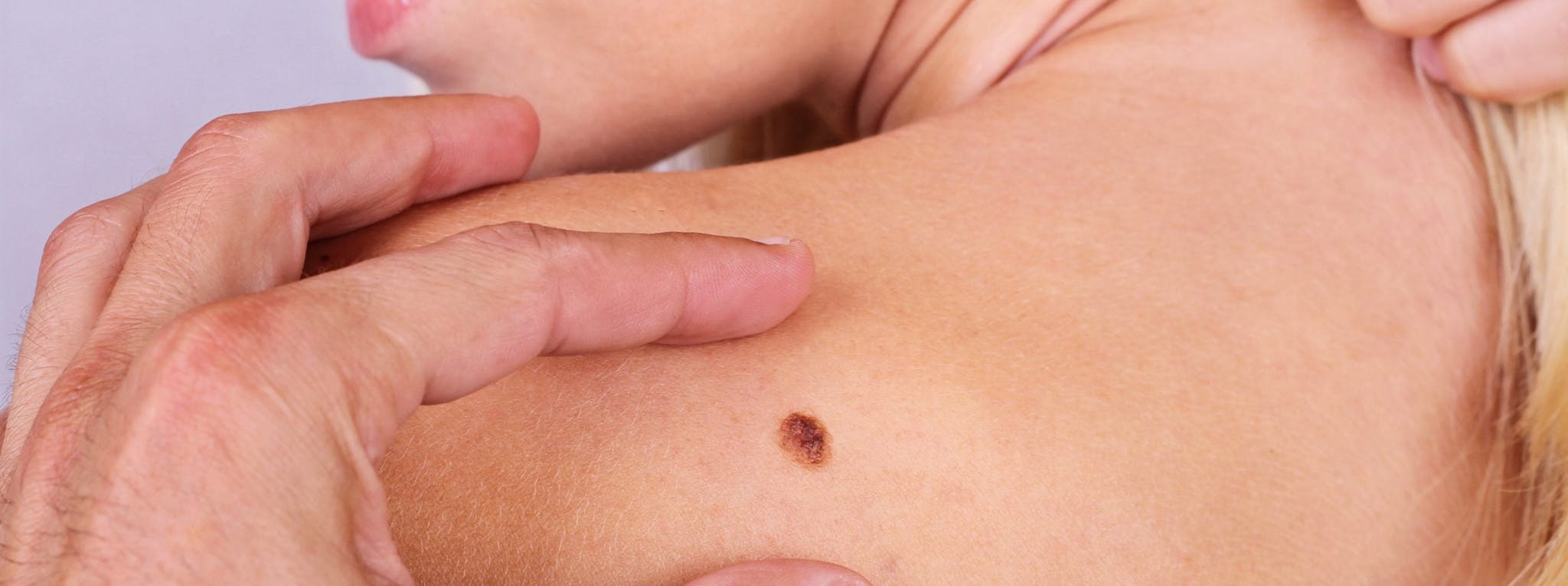
2025-06-10T13:54:10
Understanding Skin Grafts
- Dermatology
- Family Medicine
- Internal Medicine
- Orthopedics
May 9, 2016 | Cancer Center • Dermatology
Specialties:Dermatology

Did you know that over the past 30 years, more people have had skin cancer than all other cancers combined? “Each year there are more new cases of skin cancer than the combined incidence of cancers of the breast, prostate, lung and colon,” reports the Skin Cancer Foundation. Although the most common of all cancers, skin cancer is also the easiest to cure, if detected and treated early.
Performing a monthly head-to-toe self-examination of your family’s skin is the best way to spot new or changing moles or lesions. The three main types of skin cancer — basal cell carcinoma, squamous cell carcinoma and melanoma – have many different early warning signs and are often painless. If you find any of these warning signs, make an appointment with your dermatologist right away:
A growth that gets bigger and is multicolored, translucent, tan, brown, or black
A mole or birthmark that changes color or texture
A skin spot that has an irregular outline
A lesion that is larger than a pencil eraser
A sore that itches, crusts, or bleeds
An open sore that does not heal within three weeks
Basal cell carcinoma (BCC) is the most common form of skin cancer and while rarely fatal, these abnormal lesions can be very disfiguring if not treated immediately. BCCs typically look like red or pink patches, shiny bumps or open sores that don’t usually spread beyond the original site.
The second most common form of skin cancer is a growth of abnormal cells in the skin’s upper layers. Squamous cell carcinomas (SCCs) often look like warts or elevated growths with a central depression. They might be scaly red patches that crust or bleed. SCCs can become disfiguring and sometimes life-threatening if left untreated.
SCCs are found on all areas of the body but are most common in areas where sun damage is the worst, such as the face, ears, neck, scalp, arms, legs and hands. “Between 40 and 50 percent of Americans who live to age 65 will have either basal cell carcinoma or squamous cell carcinoma at least once,” according to the Skin Cancer Foundation.
Between 40 and 50 percent of Americans who live to age 65 will have either basal cell carcinoma or squamous cell carcinoma at least once.
The innovative Mohs surgery is very effective for removing BCCs and SCCs, enjoying a cure rate of 98 percent or higher. This technique allows your dermatologist to extract the cancer cells while preserving healthy tissue.
While not the most common skin cancer, melanoma is the most life threatening. These cancerous growths develop when ultraviolet radiation from the sun or tanning beds damages the DNA in skin cells and triggers mutations that form malignant tumors. Melanomas often look like black or brown moles, and some even develop from moles.
Melanoma kills an estimated 10,130 people in the U.S. annually, but if it is recognized early and not allowed to spread to other parts of the body, it is almost always curable. The Skin Cancer Foundation offers the ABCDE technique to help you recognize the signs of melanoma: asymmetrical, border, color, diameter evolving.
This common precancerous skin condition affects more than 58 million Americans, and experts estimate that most 80 year olds have AK. Also called solar keratoses, these benign, scaly growths form on the parts of the body that receive the most sun exposure. Although most cases of actinic keratoses are non-cancerous, if left untreated, 10 percent of these lesions may progress to squamous cell carcinoma. In fact, up to 60 percent of all squamous cell carcinomas begin in this way.
Almost all AKs can be treated early enough to prevent skin cancer from developing. Outpatient procedures your dermatologist might use include cryosurgery, topical medications and chemical peels.
Melanoma kills an estimated 10,130 people in the U.S. annually, but if it is recognized early and not allowed to spread to other parts of the body, it is almost always curable.
It’s important to have an annual full-body exam by a dermatologist to document any changes to your family’s skin. Revere Health Dermatology has three locations where board-certified dermatologists offer cutting-edge diagnostics and treatments, including advanced surgical procedures, such as Mohs micrographic skin surgery.
WRITTEN BY:
The Live Better Team

2025-06-10T13:54:10

2025-05-07T13:59:05

2024-11-15T13:52:32

2024-08-28T16:28:07
This information is not intended to replace the advice of a medical professional. You should always consult your doctor before making decisions about your health.